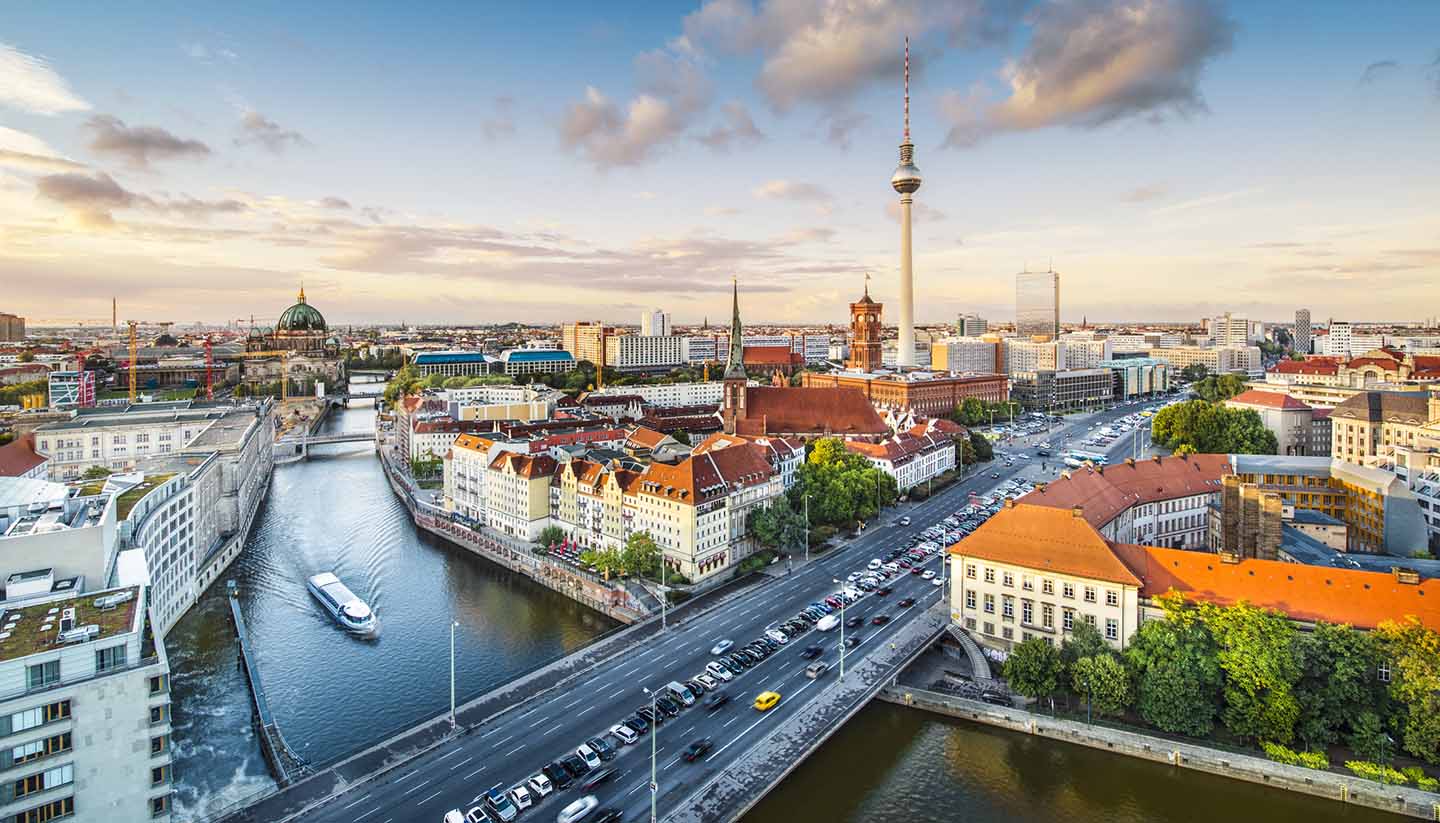Berlin History
Few cities in the world have endured such radical transformation as Berlin has over the last 100 years. The city's fate was sealed in 1871 when it became the capital of the German Reich. It was a boost in status that elevated what had been a fairly modest city into the empire's political, industrial and economic heart. The next few decades witnessed rapid development and by 1877 the city was a thriving metropolis.
The German capital soon raised eyebrows abroad - and for all the right reasons. Not only was it becoming one of Europe's cultural hotspots, but its industrious inhabitants were leaping ahead, with the invention of the world's first electric railway in 1879 counted among the city's greater achievements.
By 1903 Berlin had become the largest tenement city in the world and also boasted an underground railway, thriving cultural scene and giant department stores. But these halcyon days weren't to last. WWI abruptly burst the bubble and led to starvation, war weariness and strikes. In 1918 the embattled Kaiser Wilhelm II abdicated, the armistice was signed and the German government was handed over to the Social Democrats.
The post-war years in Berlin were defined by political instability and economic turmoil, all of which helped Adolf Hitler rise to power. Hitler began remodelling Berlin but his invasion of Poland three years later sparked WWII, during which vast swathes of Berlin were reduced to rubble. The devastated city was divided into four sectors after the war, each administered jointly by the occupying powers of the UK, France, the USA and the Soviet Union.
It wasn't a happy marriage and in 1961 the infamous Berlin Wall was erected to keep the residents of Soviet-controlled East Berlin from fleeing to the west; Germany's capital had become the epicentre of the Cold War.
When the wall fell in 1989, optimism prevailed and Berlin became Europe's largest building site as the fragmented East Berlin and West Berlin were fused back together. Today, the scars are still visible but Berlin has bounced back.
Did you know?
• The last person to die trying to cross the Berlin Wall was an East German who attempted to fly over the wall in a hot air balloon in March 1989.
• Napoleon took The Brandenburg Gate quadriga back to Paris with him following the Battle of Jena-Auerstedt in 1806.
• The Großer Tiergarten originally started out as a hunting ground for monarchs.


